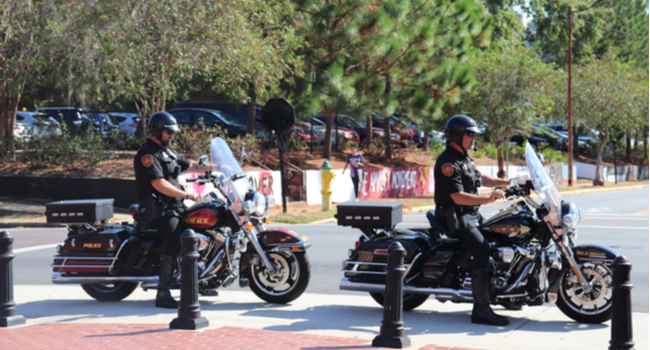
University of Louisville Adds Motorcycle Unit to Increase Safety
University of Louisville students can expect to see two University of Louisville Police Department motorcycles around campus from now on. ULPD is testing out a new motorcycle program to enhance campus safety.
- By Sherelle Black
- December 03, 2019
As a way to increase safety and cut down response times on the University of Louisville’s campus, the university’s police chief has decided to introduce motorcycles into the mix.
“The University of Louisville Police Department has a consistent and proactive goal of innovation and enhancing safety across campus,” said ULPD chief Gary Lewis. “The addition of the Motorcycle Unit will enhance our ability to perform our mission. Motorcycles are cost and energy efficient, display effective mobility techniques, strengthen and builds [sic] upon public and community relations while improving campus coverage response times.”
The police department did not buy the motorcycles, instead they are leasing two bikes for a total of $30,000 from Harley Davidson for three years as this is just a pilot program for now.
Lewis said leasing the bikes are cheaper in comparison to buying a new patrol unit which can cost $40,000.
When it comes to patrolling areas of high traffic, Lewis said the bikes will be especially helpful.
“By their nature, high traffic areas can make it difficult to position a patrol car. Motorcycles, however, can be more effective at these locations due to the ease with which they can be positioned,” said Lewis. “Motorcycles can also assimilate into traffic for enforcement purposes easier than conventional patrol vehicles.”
Lewis said not only will the bikes help with traffic violations, it will also help reduce response times.
Any type of planning and you’re looking at resources that are available and what you can immediately deploy... absolutely," Lewis said. "This is something that we can add to that. We can add that response. You can look at it from a mobility perspective in navigating places where traditional motor vehicles cannot travel. So, I think it’s definitely a benefit.”
About the Author
Sherelle Black is a Content Editor for the Infrastructure Solutions Group at 1105 Media.